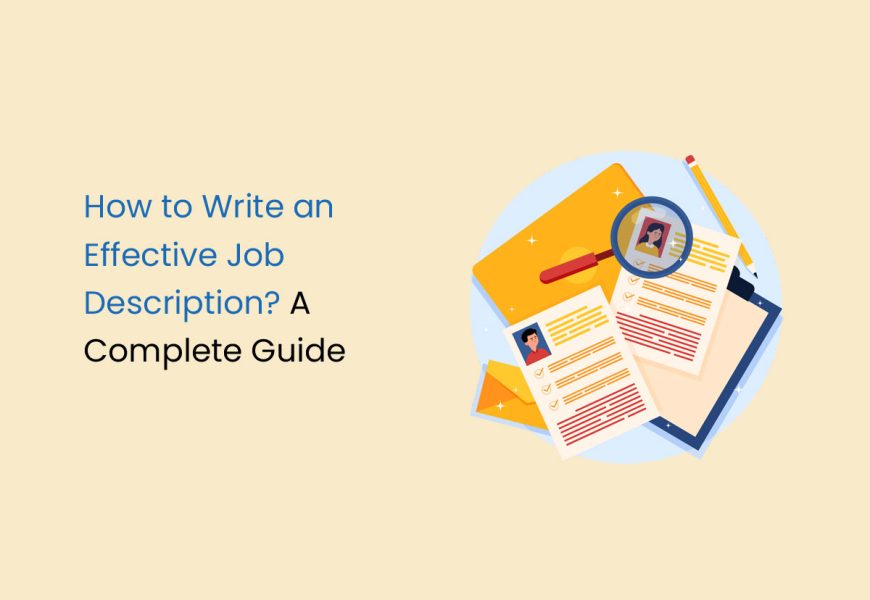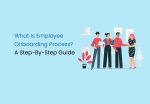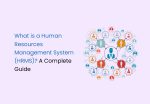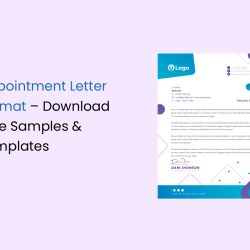Job description is key in attracting top talent, setting expectations, and streamlining the search process. Well-crafted descriptions provide companies with an opportunity to make a great first impression.
This blog delves into job description, their meaning, benefits and how to write one.
What is a Job Description?
A job description is a document that explains the role, responsibilities, purpose, qualifications, scope and expectations for a specific job in an organisation. It helps employees understand their daily tasks and how their job fits into the organisation’s bigger picture. The document lists the qualifications and skills required for the job, including education, certifications, and technical expertise. A job description is essential for attracting suitable candidates, guiding employee development, and ensuring the employees’ responsibilities align with the organisation’s objectives.
Importance of a Job Description
Job descriptions are significant for the following reasons:
- Clarity and Alignment: Job descriptions are vital in establishing clear expectations between employers and employees. They provide a detailed outline of the roles and responsibilities associated with a particular position, guiding employees on their primary duties and tasks. As a result, they help minimise misunderstandings and ensure that employee efforts align with the company’s objectives. Furthermore, job descriptions foster a sense of purpose and direction, instilling a shared understanding of the organisation’s goals.
- Recruitment and Hiring: Job descriptions are crucial in attracting qualified candidates during the recruitment process. They serve as a tool to accurately communicate the job role, responsibilities, requirements, and the company’s culture, enabling potential candidates to assess their compatibility within the organisation. A well-crafted job description attracts suitable applicants, ensuring those with the right skills and qualifications apply for the position.
- Performance Management and Evaluation: Job description is vital in evaluating employee performance. They clearly define job roles and expectations, a reference point for assessing employee performance. This helps employees understand how their performance aligns with their responsibilities, making providing constructive feedback and setting professional development goals easier.
- Legal Compliance and Risk Mitigation: Comprehensive and accurate job descriptions are crucial for legal compliance. They ensure that employment practices are fair and transparent by providing a basis for creating non-discriminatory hiring and evaluation criteria. Clear job descriptions also document legal disputes or compliance audits, minimising organisational risk.
- Employee Development: A well-structured job description outlines opportunities for growth and advancement within the organisation. It helps employees understand the skills and qualifications needed to progress in their careers and promotes a culture of continuous learning and development.
Job Description vs. Job Posting
A job description is an internal document providing information about the company’s job position, including the roles and responsibilities an applicant will be expected to fulfill. It is usually written in a formal tone and is meant for internal use only.
On the other hand, a job posting is an external advertisement designed to attract potential candidates and applicants. It is written in an engaging tone and contains information about the job position and details about the company and its benefits.
Benefits of a Job Description
The benefits of job descriptions are as follows:
- Improved Recruitment: Well-written job descriptions act as communication tools that enable both employees and applicants to understand the expectations and requirements of the role, including the essential duties, capabilities, educational qualifications, and experience required for the job. Aligning employee expectations with business expectations can enhance internal and external recruitment and retain and motivate the best talent.
- Accurate Compensation Data: While direct compensation should not be mentioned in the job description, it should enable one to research and determine the market value of the role. A well-crafted job description can help HR assess where the job fits within the existing pay structure, preventing equity or compression issues from arising when filling the position.
- Effective People Planning: People planning is crucial to the success of a company’s business plan. To execute and measure the success of the organisation’s missions and goals, the following components are essential:
- A comprehensive list of job descriptions across the organisation, showcasing all the roles, can help identify unfilled positions and assist with future planning.
- Job descriptions can outline the position’s role, responsibilities, and future career roadmap, enabling forward-looking recruitment for future roles. Hiring managers can later assess candidates for not only the current vacancy but also for future advancement.
- Job descriptions can be matched with the performance evaluation system to identify areas where additional training is required.
Drawbacks of a Job Description
The drawbacks of job descriptions are as follows:
- Not Position-Specific: Companies often create one job profile for all employees in similar roles. This can lead to missing important details. For example, department heads in an organisation may have similar primary responsibilities, but their specific tasks, priorities, and time spent on each task may differ significantly. Job descriptions should reflect the unique nature of each position and not try to cover too many different positions. The job description may not accurately reflect the required work if this is not done.
- Being Descriptive rather than Prescriptive: Job descriptions are often created based on information provided by the employee and after the work has been designed. They give a picture of what currently exists instead of what should be. To ensure the organisation’s best interests are met, managers at all levels should be involved in creating job descriptions and controlling the design. Employee job descriptions should describe what should happen, and performance reviews should compare what happens with what should happen. Any discrepancies should lead to adjustments. Companies should avoid letting jobs become “products of the incumbent” that match the incumbent’s interests rather than the organisations.
- No Separation of Performance Standards: When writing job descriptions, performance-level expectations such as quantity, quality, timeliness, and cost criteria must be included. Some companies use these results-oriented descriptions to improve the value of their job descriptions. However, it is essential to note that performance criteria are not part of the job design. As such, it is best to leave them for a separate performance evaluation instrument. This can be attached to the job description but must be distinct from it.
- Temporary Work Gets Left Out: Many jobs occasionally include temporary assignments, such as special projects, committee assignments, and one-time tasks. Any task planned for execution over a year or less should be included in the job description under a Temporary Assignment section. This is a legitimate part of job design. Failure to acknowledge such work, which happens frequently, can lead to errors in performance evaluations, workload assessments, etc.
- No Representation of Non-Task Time: Job descriptions often list duty statements and assign time percentages to them, which should add up to 100%. However, workers do not spend all their time working. Managers and employees often have idle time while waiting for delays, taking breaks, socialising or doing semi-work activities, like travelling. For some jobs, these activities take up a significant amount of time. If these activities are not mentioned in the job description, it can misrepresent the job’s true nature.
What To Include in a Job Description
The following must be included in an effective job description:
Job Title
Job descriptions should begin with a clear and concise job title that accurately reflects the purpose and scope of the position. It’s important to use industry-standard terms that candidates are likely to search for rather than quirky or unconventional language that could deter top candidates.
Company’s Basic Information
Include a brief pitch about the organisation and its values to drive interest from potential candidates. Highlighting the benefits and perks of working with the company can attract the right type of employees.
Expectations and Summary of Role
Provide an overview of the job, its role within the organisation, and expectations for the position. This can include information about the type of work, conditions, and whether the position is full-time, part-time, remote, or hybrid.
Job Duties and Responsibilities
When outlining the job duties and responsibilities, focus on the essential functions of the role, using bullet points to highlight key details and outcomes. Include relevant keywords to help your posting show up in candidate searches.
Necessary Qualifications and Skills
Specify the necessary qualifications and skills for the position, including any education, certifications, or years of experience needed. Separate required and preferred skills to avoid losing potential candidates.
Call to Action
Conclude the job description with a clear call-to-action, asking candidates to apply and providing information on how to do so. Specify any application requirements and deadlines and provide a direct link or email address for candidates.
How to Write a Job Description
You can write a job description by following these steps:
- Job Title and Summary: The job title should be clear and descriptive, accurately reflecting the roles and responsibilities. The summary should provide a brief overview of the primary objectives and purpose of the role within the organisation. This section introduces the company and its employer brand to a potential candidate.
- Outline Responsibilities: The responsibilities section should detail the key duties and tasks associated with the role. Use action-oriented language to articulate the tasks, projects, and functions for which the employee will be accountable. Organise responsibilities into bullet points for readability. Emphasise any duties that are unique to the company. Include details about the work environment and the daily activities of the role to help candidates decide if it’s a good fit. This will attract the best candidates for the position.
- Specify Qualifications and Skills: This section should clearly outline the essential qualifications, skills, and experience required for the role. It should include educational background, certifications, technical expertise, and specific competencies crucial for success. Soft skills like problem-solving and communication or any expected personality traits from a successful candidate should also be mentioned in this section.
- Describe Reporting Relationships: Indicate the reporting structure within the organisation. Specify who the employee will report to and collaborate with. It helps clarify team dynamics and hierarchy.
- Highlight Company Culture and Values: Describe the company’s work culture and values and how the role enhances or maintains these aspects. Provide details on the key workplace environment, values, and qualities contributing to the organisation’s success.
- Formatting and Readability: The job description should be well-structured and easy to understand and read. Use concise sentences, bullet points, and subheadings to enhance readability. Maintain a professional tone and avoid jargon that might be unclear to candidates. This section facilitates recruitment.
- Review and Revision: When finalising a job description, it’s important to review it thoroughly. This ensures the description is accurate, complete and aligned with the company’s goal. To do this, seek input from relevant stakeholders such as hiring managers, team members, and HR professionals. This collaborative approach helps ensure everyone agrees on the role’s requirements and expectations.
Tips to Write a Great Job Description
Some tips for writing a great job description are as follows:
- Include Essential Information in Separate Sections: Divide the job description into separate sections to help candidates determine if the position is for them. Start with a company overview, followed by a job summary that highlights the role’s essential functions, responsibilities, qualifications and required skills. Specifying the job’s benefits and perks is necessary as it can tip the scales for curious candidates.
- Focus on Well-Written Descriptions: the quality of the job descriptions reflects the company’s ethos. Therefore, crafting engaging, comprehensive, and concise descriptions that demonstrate professionalism and trustworthiness is crucial. Use bullet points to highlight key information and ensure the language is easy to understand.
- Keep it Concise: Candidates will likely skip over a long-winded job description. Keep the description short and to the point, around 300 words, providing enough information to help candidates understand the role’s requirements and expectations.
- Keep the Target Audience in Mind: Remember that the job description is intended for a living, breathing, thinking person. Use engaging language that aligns with the company brand and speaks to the candidate’s needs. Depict the job accurately by including the expected duties and necessary soft skills. Also, explain what a typical day on the job entails to give candidates a better understanding of the role.
- Update the Job Descriptions: Review job descriptions periodically to ensure they accurately reflect the role. If a position changes to include more responsibilities, update it. Proper job descriptions are essential for HR processes to function smoothly. Keep the job descriptions up-to-date, accurate, and reflective of the current job market to attract the best talent.
Job Description Example
Company’s Basic Information
ABC Company is a global ICT solutions provider committed to customer-centric innovation. Through strong partnerships and teamwork, we have established capabilities in several carrier networks and cloud computing fields. We are currently hiring for the following position.
Role Summary
We are looking for a Human Resources Manager with exceptional people management skills who can carry out their duties in a way that promotes employee welfare and the company’s growth. This full-time position is available on-site in Mumbai, with an annual salary ranging from Rs. 14,00,000 to Rs. 16,00,000 depending on job-related skills, knowledge, and experience. The role is also eligible for a discretionary bonus and a comprehensive benefits package.
Duties and Responsibilities
- Developing, organising and directing the tasks and affairs of the Human Resources department
- Overseeing employee welfare, attendance and absence
- Coordinating recruitment by creating job descriptions, sending out job ads and interviewing candidates
- Conducting staff orientation and employee development programs
- Revising and maintaining the company policies and procedures
- Preparing regular management reports to track the achievement of company goals
- Conducting annual salary surveys and analysing and revising the company’s compensation packages
- Coordinating and preparing employment contracts, insurance brokerage, payroll requirements, pension administration and notices of termination
- Overseeing the company’s conflict resolution process
- Promoting the health and safety of the workforce
Qualifications and Skills
- A bachelor’s in personnel management or human resources
- At least three years of experience in human resources management
- In-depth knowledge of HR best practices and labour laws
- An ethical mindset with exceptional communication and interpersonal skills
- Presentation, conflict resolution skills and active listening
- Familiarity with HR software
To apply, candidates must submit their cover letter and resume by May 12, 2024.
Bonus Tips
Some tips for drafting an effective job description are as follows:
- Use simple language and avoid gender-specific words to ensure inclusivity and clarity.
- To define the role’s responsibilities clearly, omit trivial or occasional tasks and focus on essential duties.
- Ensure that the job description includes only current duties relevant to the position to avoid confusion.
- Reevaluate and update the job description periodically to suit the requirements of specific roles and ensure clarity.
- Engage current employees to determine the necessary skills, ensuring alignment with job requirements.
- Stand out from competitors by including compensation plan details to attract top talent.
- Highlight benefits and perks such as employee discounts, insurance coverage, paid time off, and tuition reimbursement to attract and retain talent.
- Avoid communicating job openings on Fridays or weekends to ensure maximum visibility and response from potential candidates.
Conclusion
Job descriptions play a crucial role in hiring and managing employees. They are like the foundation of a building, holding everything together. Job descriptions explain what a job is about, its importance, and what it can lead to.
Writing a good job description requires both skill and knowledge. It needs to be clear and accurate and show what the company is all about. When written well, job descriptions can be more than just tasks and responsibilities. They can attract the best candidates, support career growth, and help businesses succeed.
Frequently Asked Questions
What is the duties section in a job description?
The Job Duties section is a fundamental component of any Job Description. It outlines a job's intricacy, range, and degree of responsibility.
Why do you need a job description?
A job description is a crucial component of the hiring process, as it helps attract qualified candidates with the necessary skills and experience.
Why are high-quality job descriptions a part of modern HR strategy?
Compelling job descriptions are essential to modern HR strategy, not just a supplementary component. Accurate and well-written job descriptions help HR build a plan that drives successful employee recruitment, engagement, and retention. Therefore, modern HR strategies must incorporate complete and effective job descriptions to succeed in today's world of work.
What makes an effective job description?
An effective job description is concise, clear and informative. It should help candidates determine if they should apply for the job.














